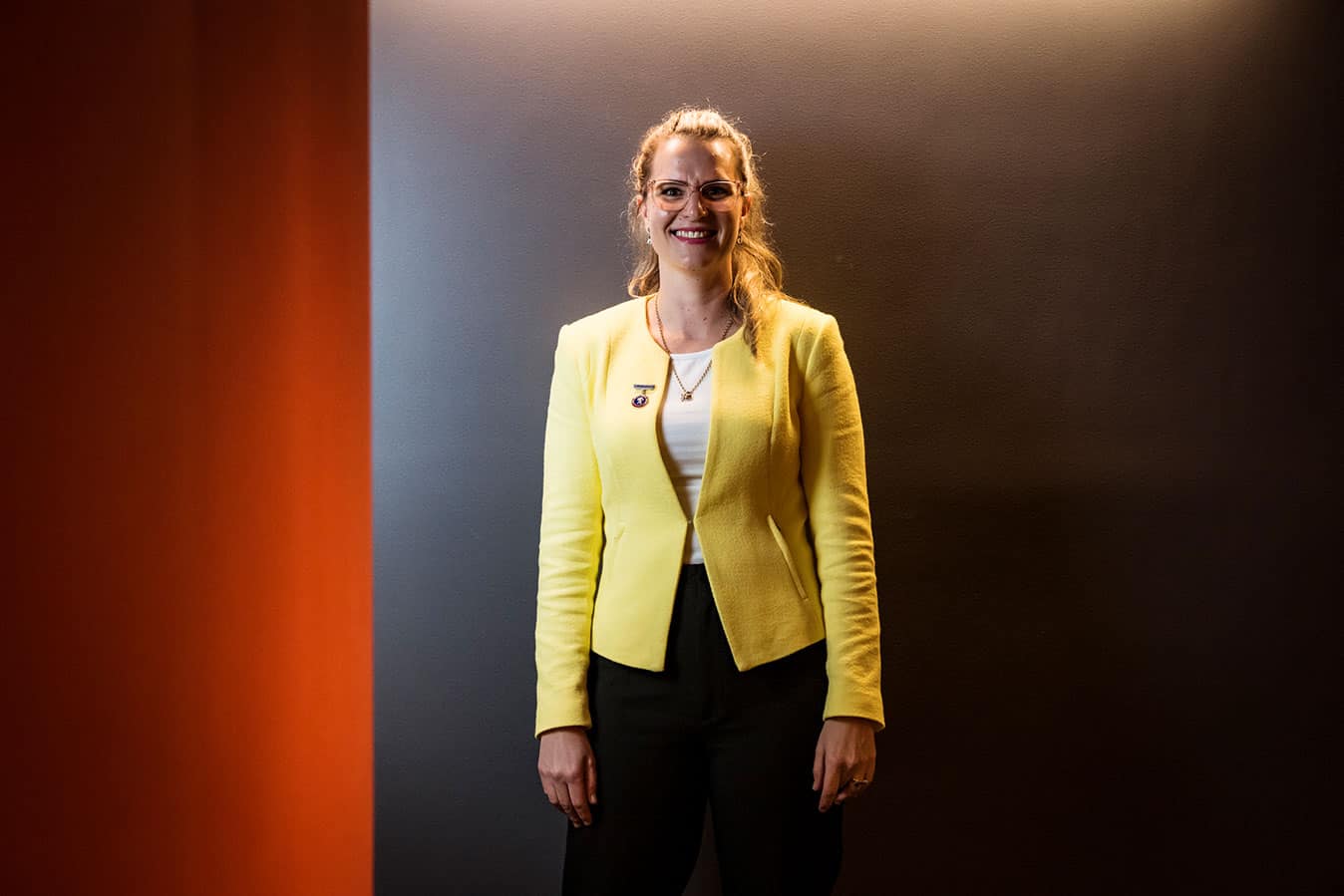Sarah Almeroth’s love of the environment has led her on a journey to become a sustainability champion in healthcare.
Sarah, who works as the Northern Adelaide Local Health Network (NALHN) Sustainability Environmental Project Officer, became interested in climate change and healthcare when studying for her undergraduate nursing degree.
“There was a real connection for me because I’m so passionate about our environment and sustainability, and given I work in healthcare, I had that light bulb moment where I felt that this was something that needed to be done – which leads me to where I am now.”
Sarah initially connected with a green champion at a local hospital, Adelaide’s Flinders Medical Centre. While there, she observed all sorts of wonderful things happening in the sustainability space, but she also felt like she did not yet have the skills and knowledge for this space.
But what Sarah did have was a vision for where she wanted to take her organisation, a ton of passion, determination and drive to make needed changes.
“So that was in 2021, and from that day while working as an anaesthetic nurse [at the Lyell McEwin Hospital, in Adelaide], I became a little obsessed with decarbonising our healthcare system.”
To start with, Sarah created a green team called the Northern Stem Sustainability Team for Environment and Mindfulness.
“We consisted of surgical nurses, anaesthetic nurses, and consultant anaesthetists.”
Sarah spent her spare time researching green initiatives in the perioperative space and then working on ways of integrating change into our hospitals.
Sarah said somewhere along the line, she became the go-to person in Adelaide. “People seemed to know my name and how to contact me.”
She started getting invited to speak at conferences where she talked about what she was doing in the perioperative setting and leading change.
“I was also asked by the University of Adelaide to take part in a hackathon, which is like an intense workshop of innovation from different disciplines like medicine and health science and engineering. The idea was to brainstorm ideas about medical waste when you’re trying to change a healthcare system.”
By the end of 2022, Sarah thought the hospital could be doing sustainability bigger and better, and given the opportunity, she wanted to lead the way.
“But be careful what you wish for because the stars aligned with NALHN looking at sustainability, the executives supported me, and I was offered this role as NALHN Sustainability Environmental Project Officer, which is where I am now.”
One of Sarah’s first projects in the role was looking at alternative PPE gowns.
When researching PPE clothing, she noticed it had dramatically changed over time. Referring to her grandmother, who worked as a surgical matron in the 1940s, her PPE was a linen apron that was washed. Projecting forward in time, Sarah’s mother who worked as a nurse in ED, where she wore an isolation gown that was also washed.
“Several decades later and my PPE is a disposable single-use gown designed to be discarded after single use.”
Reviewing laboratory studies, regulations, guidelines, and standards, highlighted the problems and potential barriers to isolation gowns selected and used, Sarah said.
“When [current] isolation gowns were trialled and tested overseas, the evidence started highlighting gaps that the PPE that was worn did not pass certain standards.”
For example, Sarah says disposable gowns were called into question after recent epidemics, such as the Ebola crisis of 2014, which claimed the lives of over 500 healthcare workers.
“And following this crisis, it was found that some medical gowns on the overseas market were defective, allowing fluid to leak through, ultimately infecting surgeons and nurses in contact with infected patients.”
Other studies have shown the lack of durability of disposable gowns while supporting the durability of reusable gowns and their less detrimental impact on the environment.
“This makes them more economical than disposable gowns and provides greater protection for healthcare workers than the disposable gowns,” Sarah said.
According to Sarah, a patient in intensive care with Covid-19 can require more than 50 single-use gowns during 24 hours. “Healthcare workers worldwide used approximately 44 million non-PPE items daily during the Covid-19 pandemic generating over 13,000 tons of waste – That is about as heavy as Brooklyn Bridge.”
Sarah said 5.9 million tonnes of waste is generated annually from healthcare facilities. “And that’s in the US alone – we’re talking 1.7 million tonnes of plastic.
Sarah’s Local Health Network is looking at alternative products that provide the same, if not better, protection.
“Looking at alternatives and how they can be implemented is just one way we aim to change our footprint.”








